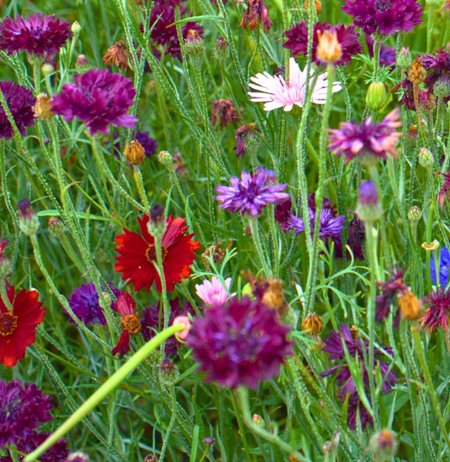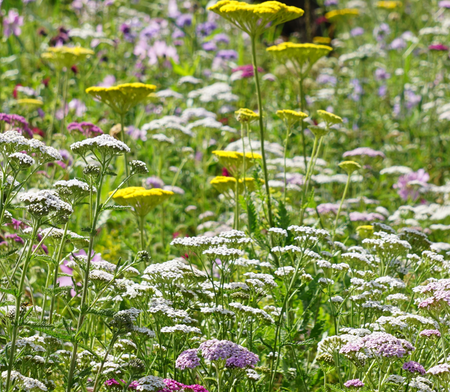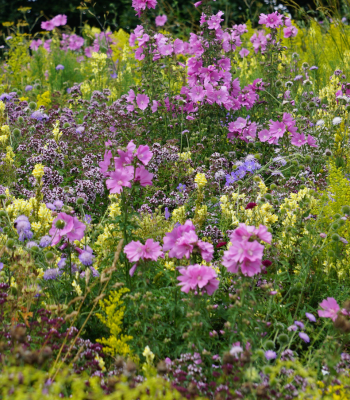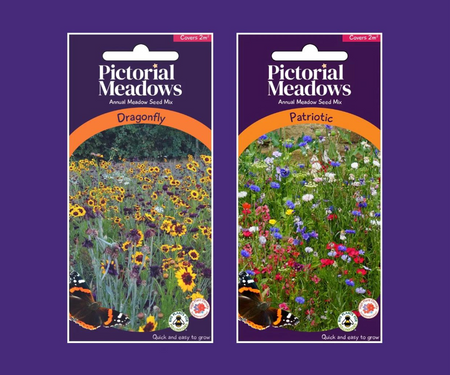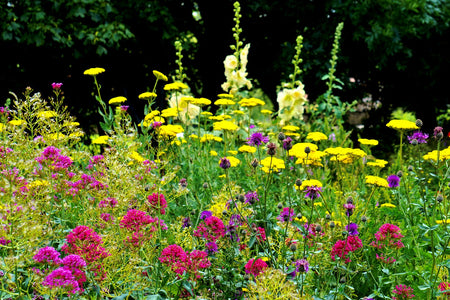In this article, our Landscape Manager Owen discusses the benefits of using Pictorial Meadows seed mixes and the key factors to consider when designing your perennial meadow.

Here are a few tips for designing stunning landscapes with perennial meadows from seed and turf:
(1) The right plants
For more than twenty years, we’ve worked with almost 600 different plants to find the diversity of star performers found in our seed and turf mixes today. We mix the most impactful native wildflowers and enhance them with a selection of global species to create stunning meadows with long-season interest for people and wildlife.
(2) Ecologically and visually balanced mixes
The recipes for our designer meadow mixes are backed by detailed species data. We trial the mixes to assess how the meadows look and perform overtime to provide long flowering periods and high impact throughout the season. This is what sets our meadows apart as ‘designer meadows’.
(3) A range of meadow options
We have carefully formulated seed mixes and turf suited to wide-ranging conditions, from damp rain gardens to exposed rooftops.
There are a few key factors to consider when designing your perennial meadow:
(1) Soil fertility
Sending samples away for basic lab analysis of P, K, and Mg is worthwhile. Soils with a phosphorus index of 0-1 are best for our low nutrient perennials, while our other mixes are suited to average fertility soils.
(2) Weed competition
When creating a perennial meadow from seed, we recommend thoroughly weeding the soil, then sowing onto a 10cm sterile mulch of weed-free sand to help minimise competition weeds.
(3) Drainage and soil moisture
If water temporarily pools on the surface after heavy rain, choose one of our mixes suited to moderate seasonal waterlogging. If the site is sharply drained and dry, choose one of our drought-tolerant mixes.
 Moody Blues © Joanne Bernstein
Moody Blues © Joanne Bernstein
(4) Light levels
Some of our mixes are suited to semi-shade, meaning at least four hours of direct light in summer. Otherwise, meadows do best in sunny, open conditions. Sun tracking apps are very useful for finding out what times of day the site gets direct sunlight, for how long, at different times of year.
(5) Access
Access for meadow management should be considered, such as weeding, and cutting and collecting the meadow arisings. If your meadow is set within existing grass or other vegetation, keep a perimeter of the neighbouring grass mown short. This will frame the meadow and help prevent encroachment by weeds.
(6) Placing the meadow
The widespread appreciation of flower meadows means they are widely used at almost any scale and context. Think about where the meadow will be viewed from; meadows can look particularly good on slopes that rise away from the viewer, but only perennial turf should be used on slopes rather than seed. Factor in paths, seating areas, vistas and viewpoints where areas are looked down on from high.
Our seed mixes and turf embody the wisdom distilled from years of expertise. We would love to join you on your meadow journey.
Browse our selection of premium perennial meadow seeds
Expert Advice
At Pictorial Meadows, we’re here to assist you every step of the way. Visit our Meadows Advice Centre for tips and advice, get in touch with product queries or sign up to our newsletter to enjoy tips, news and offers.



